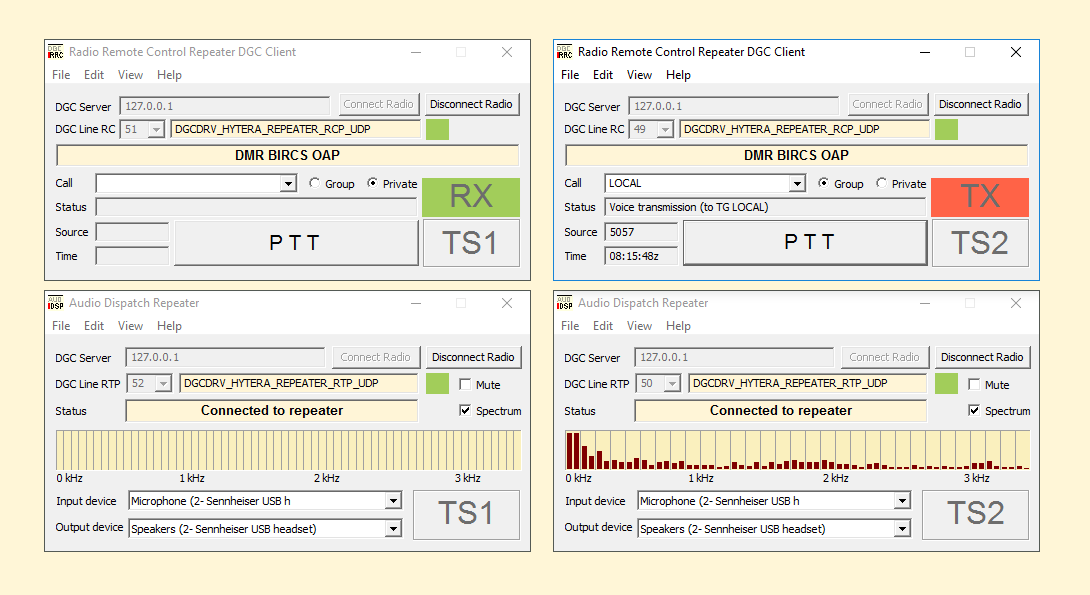

Voice Dispatching

Audio dispatch functionality is realized in
BIRCS
with a combination of two application modules, namely
Radio Remote
Control (RRC)
and Audio Dispatch (AD).
Radio Remote Control is a program to control the functions of a PC
connected radio (usually at the base station) locally or over the network. Due
to its multiuser
capabilities
it allows the setup of several dispatcher
workstations accessing one single radio.
Audio
Dispatch (AD) streams the audio received by the radio into the network. It also
converts an audio stream from the network into transmit audio for the radio when
transmitting. For AD to work a soundcard interface connected to the PC and to
the radio is required. Receive and transmit audio streams are visualized using
colors in a bar graph spectrum display (0 to 3 kHz). By using AD every PC in the
network is able to access the radio connected to the radio server PC for
reception and transmission without any additional peripherals except the
microphone and speakers of the PC. AD also maintains a network interface to RRC
for transmit/receive switching. Depending on the network configuration AD is
able to play the audio of other participants in the network so a dispatcher not
only hears traffic received by the radio but also transmit audio coming from the
other dispatcher workstations. AD can be configured to record the complete audio
stream (inbound and outbound) into files, a function required by law in
certain applications. As an additional feature AD can be used for local intercom
purposes between dispatcher workstations over the network if configured
accordingly. In conjunction with selective call messaging
in analog (FM)
systems
AD can mute the audio
stream from the network on user request and enable it again automatically on
reception of a suitable (configurable) selective call code from the radio. So a
dispatcher will only hear traffic directed to him and nothing else.


The
following functionality is available in RRC/AD:
·
Connect/disconnect to/from the radio
·
Display
of version information (firmware and options)
·
Volume setting
·
Display brightness
setting
·
Zone selection
· Clarifier function (if applicable)
·
Channel
selection within the selected zone and display of the channel parameters
·
Power
level setting (high/low)
· Transmit/receive switching (PTT)
·
Activation/deactivation of the monitor function
·
Activation/deactivation of the scan function
·
Nuisance deletion
(while scanning)
·
Additional functions
based on the underlying radio driver used for a given radio platform
· Emergency handling (button triggered or triggered by LoneWorker or Man Down functions)
·
Radio power-off
· Spectrum display
RRC offers a UDP interface for third party applications to control some
functions, for example such an application can trigger the transmission of
pre-recorded audio messages on-air.
Additional functions can be implemented if they are supported by the radio
platform.
RRC and AD work with mobile (or even handheld) transceivers as control station radios. For direct access to a repeater a special version of these two application modules exist: RRC/R and AD/R (presently for Hytera branded repeaters only). In this case audio streams are digitally exchanged between the PC and the repeater over the network using the Real Time Protocol (RTP).
